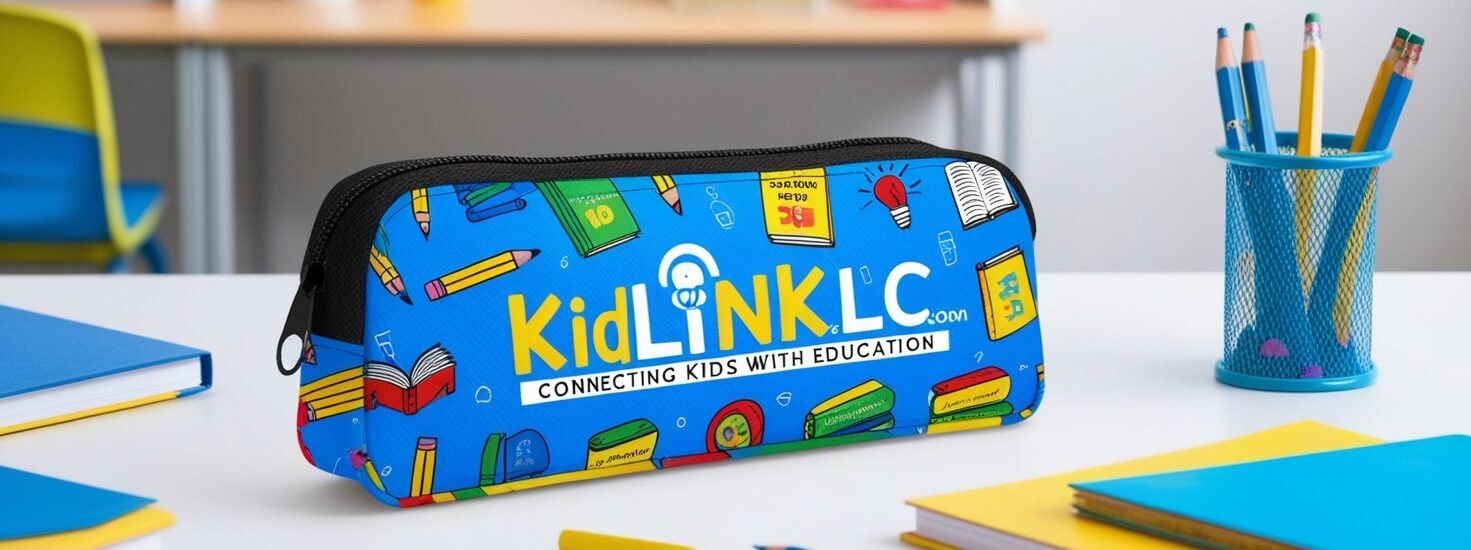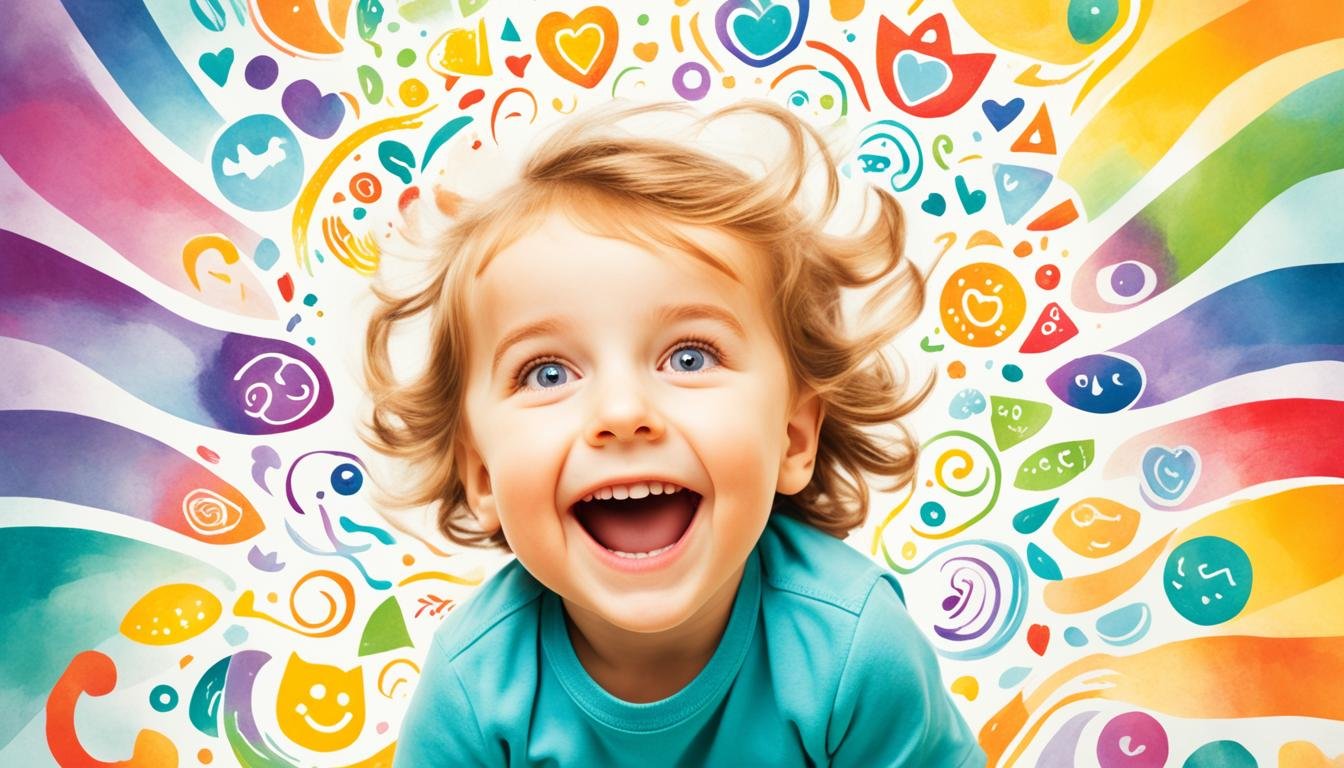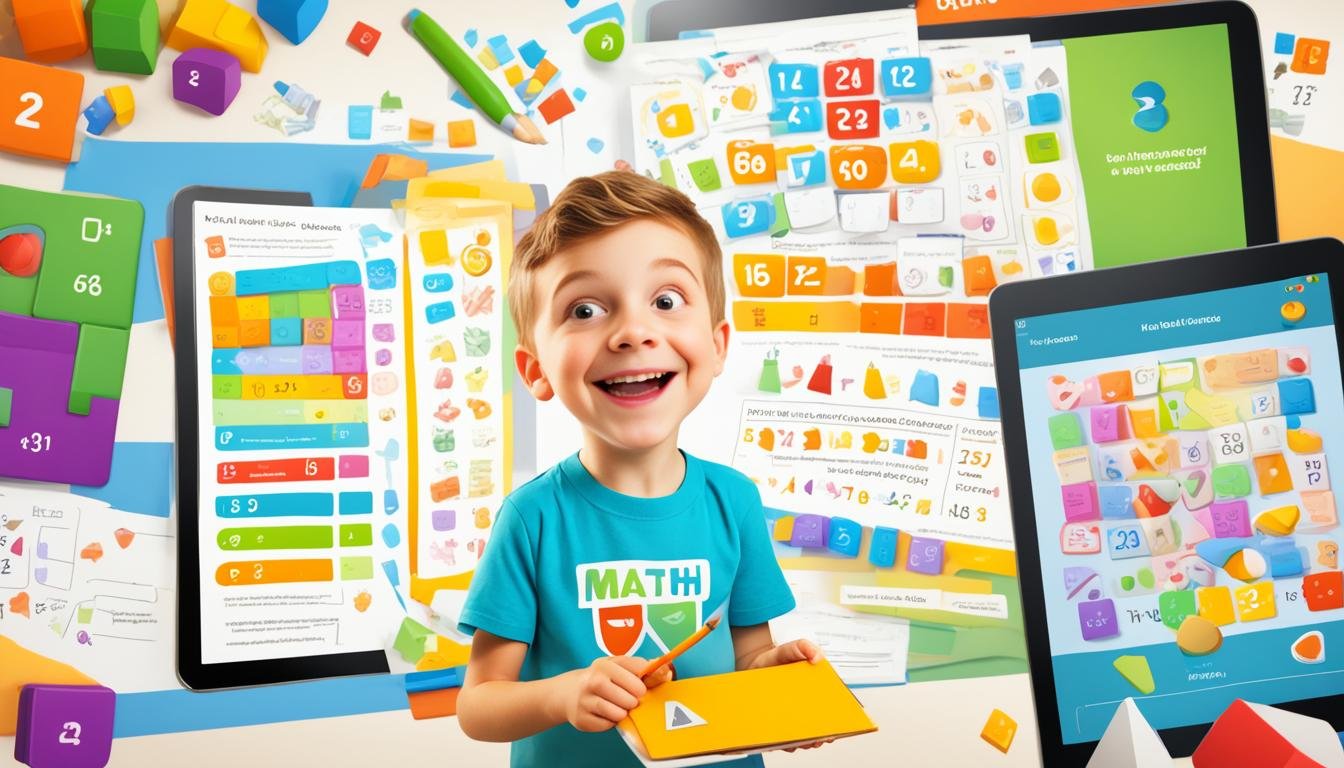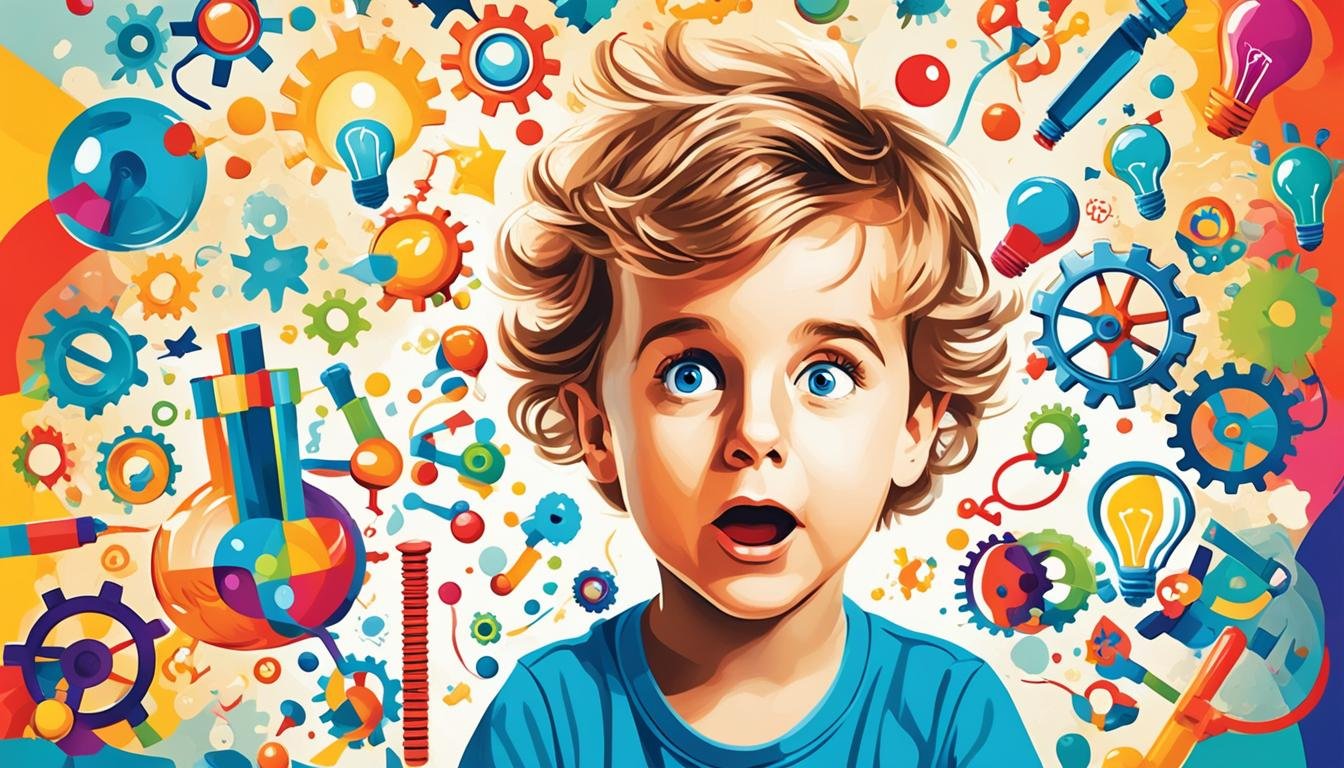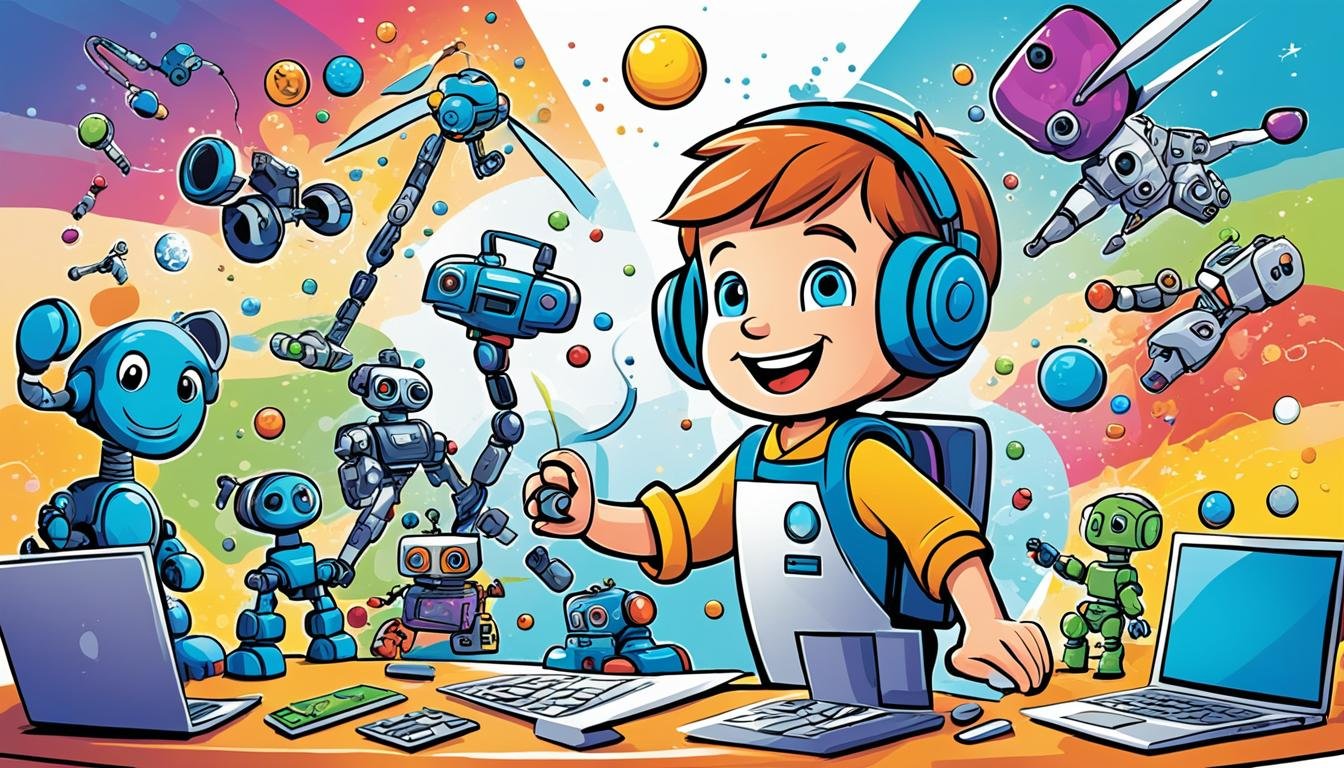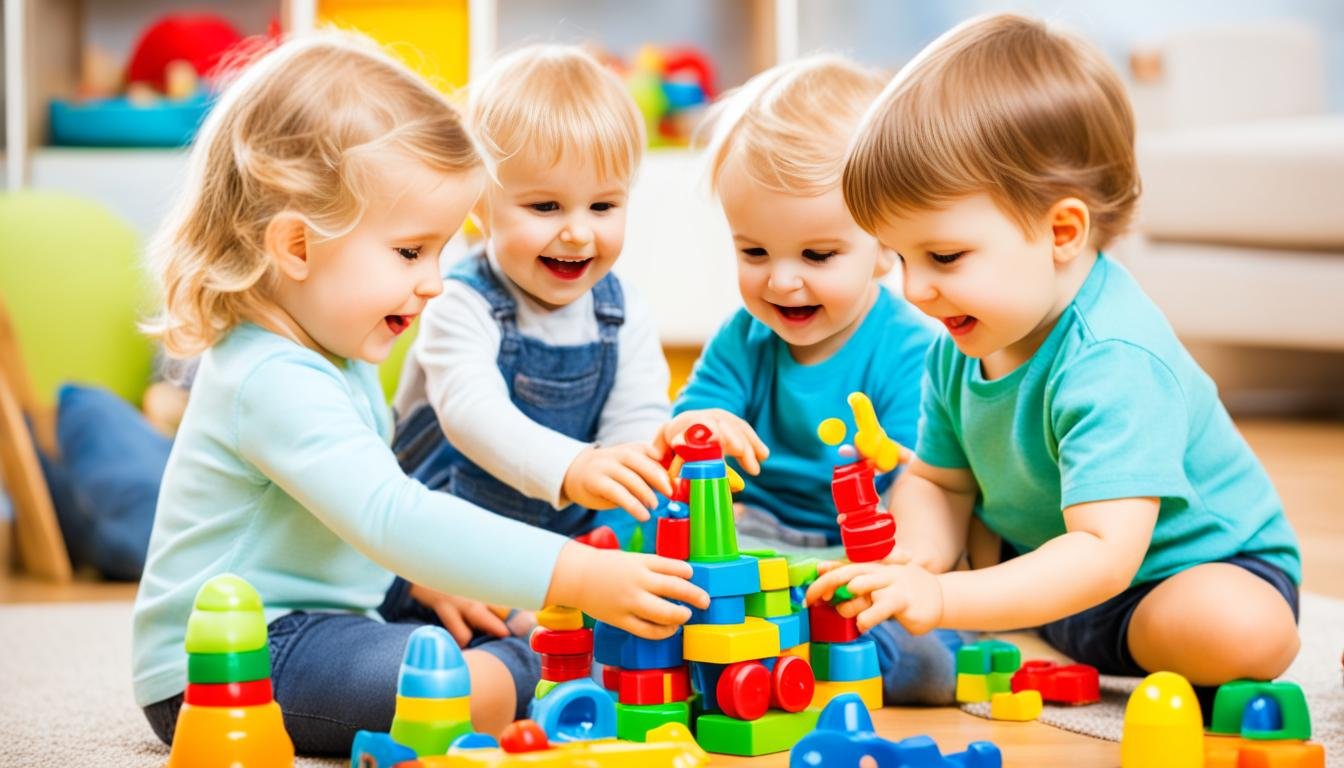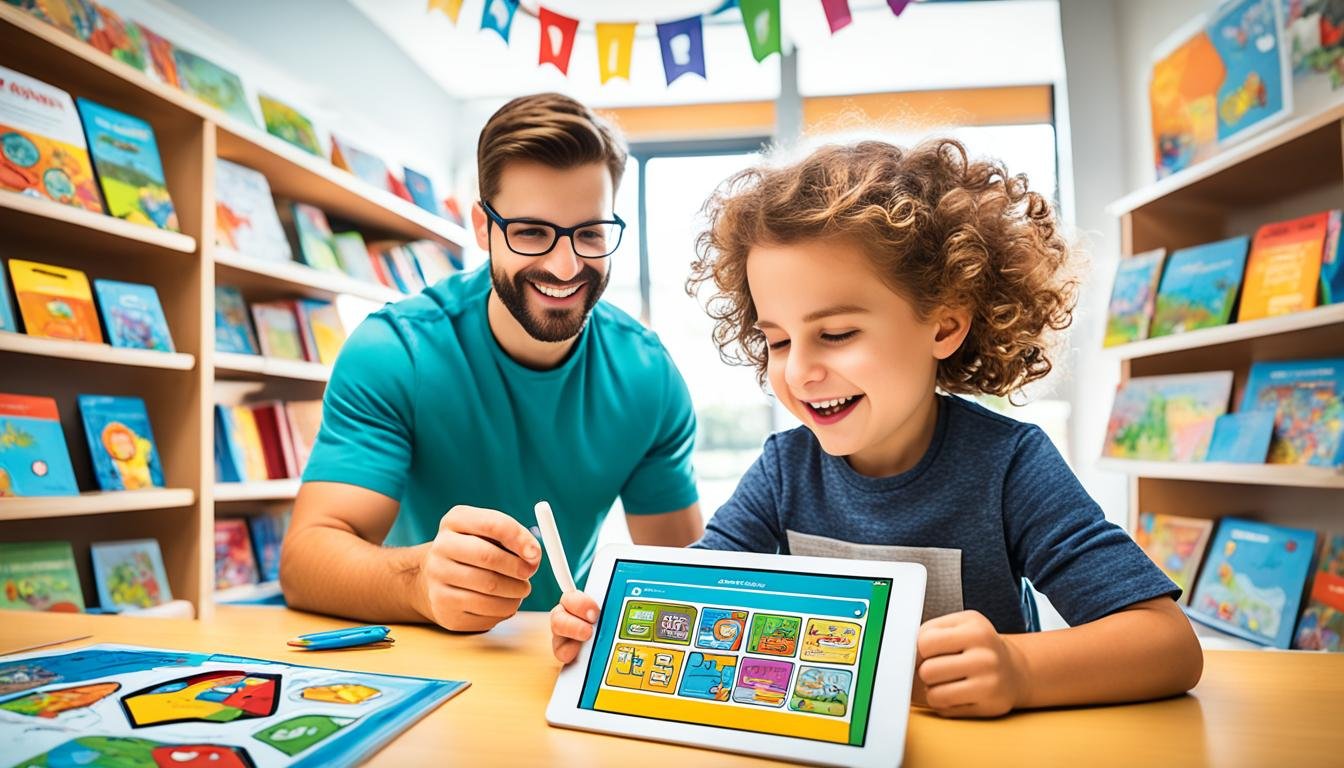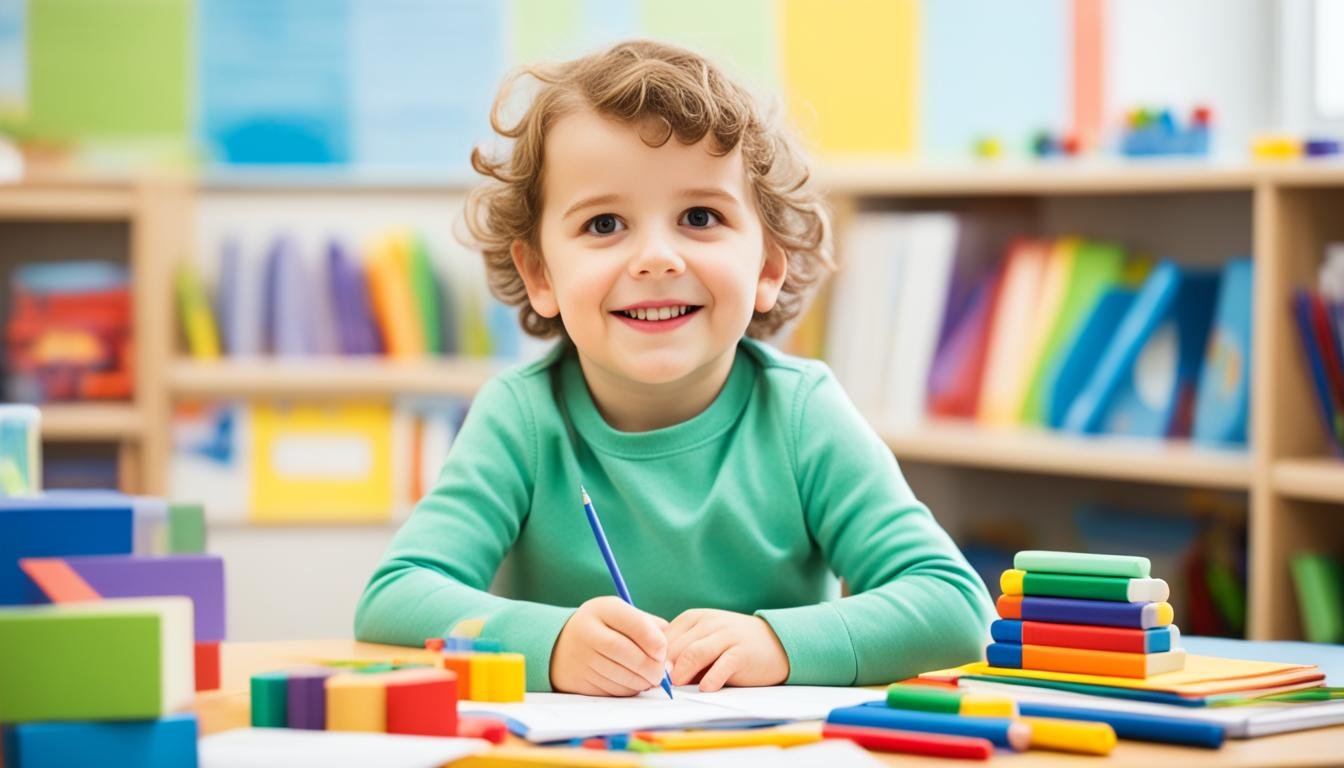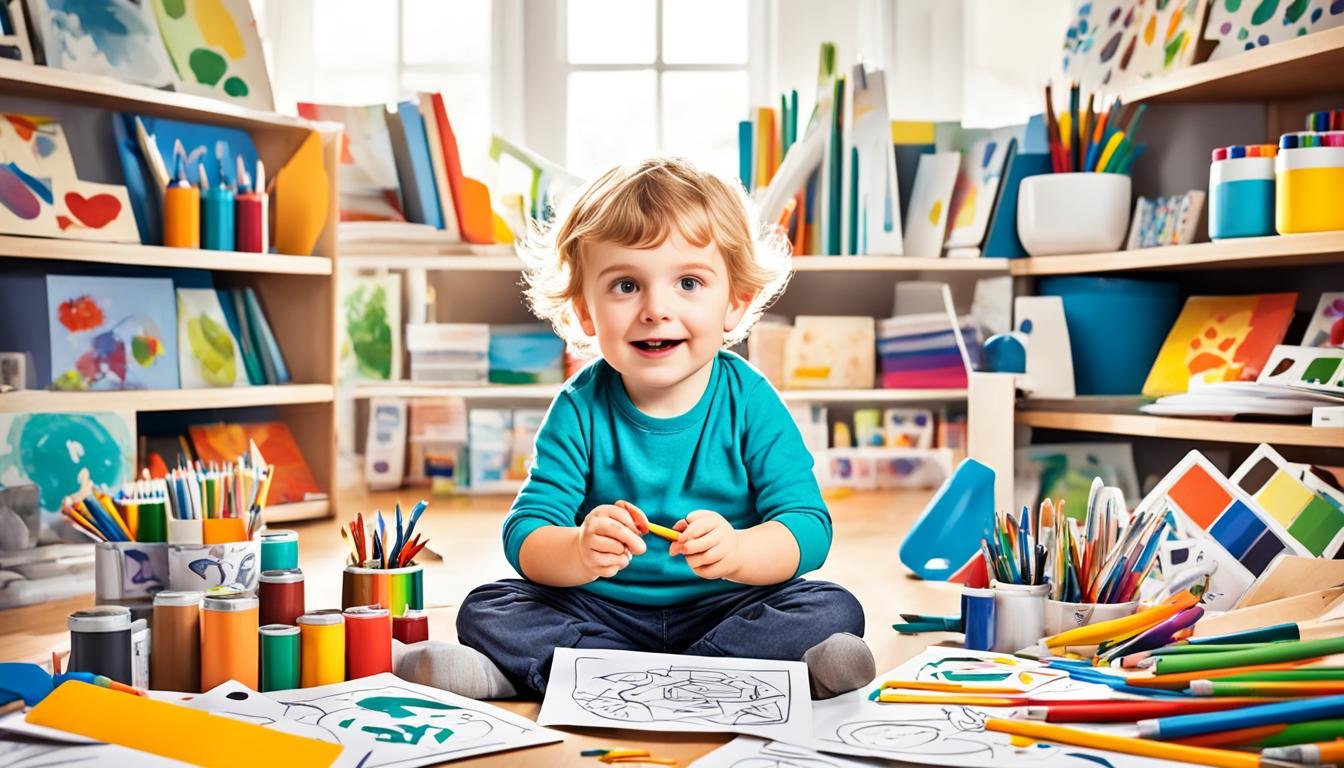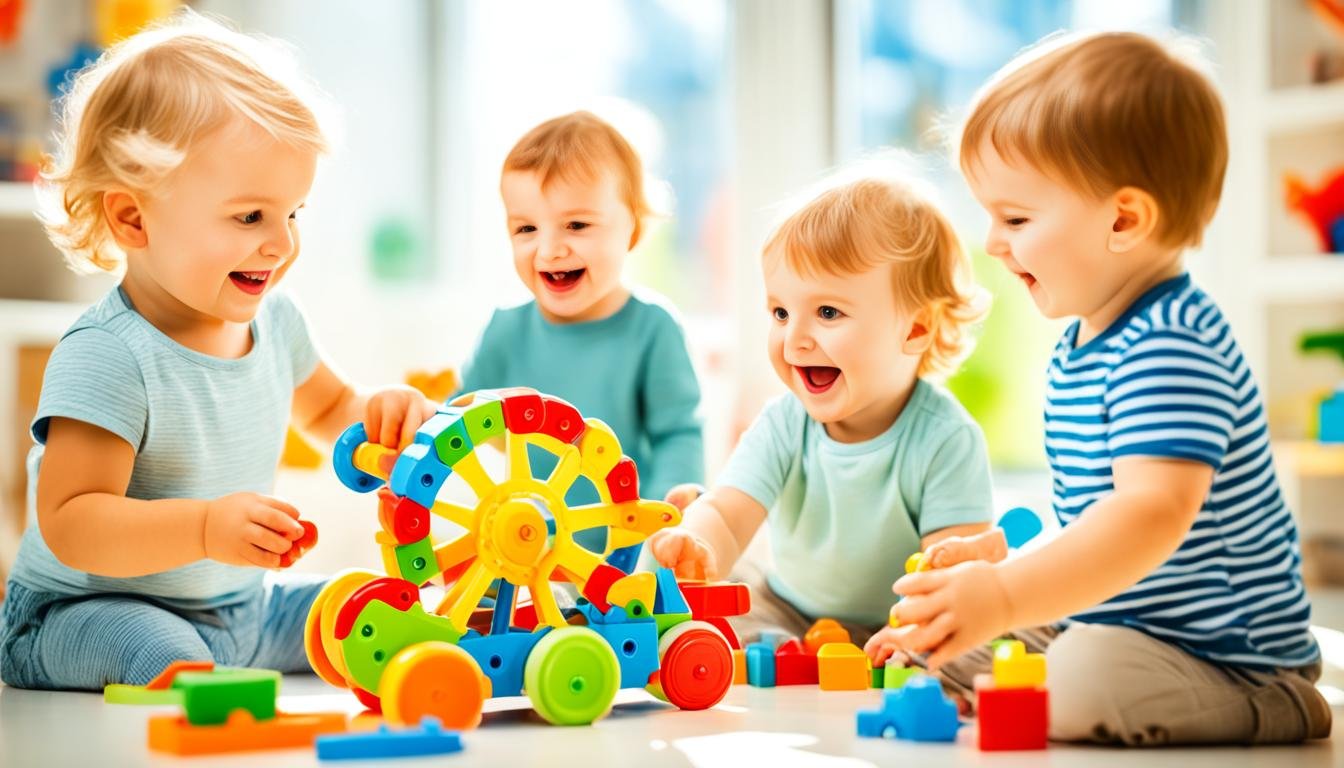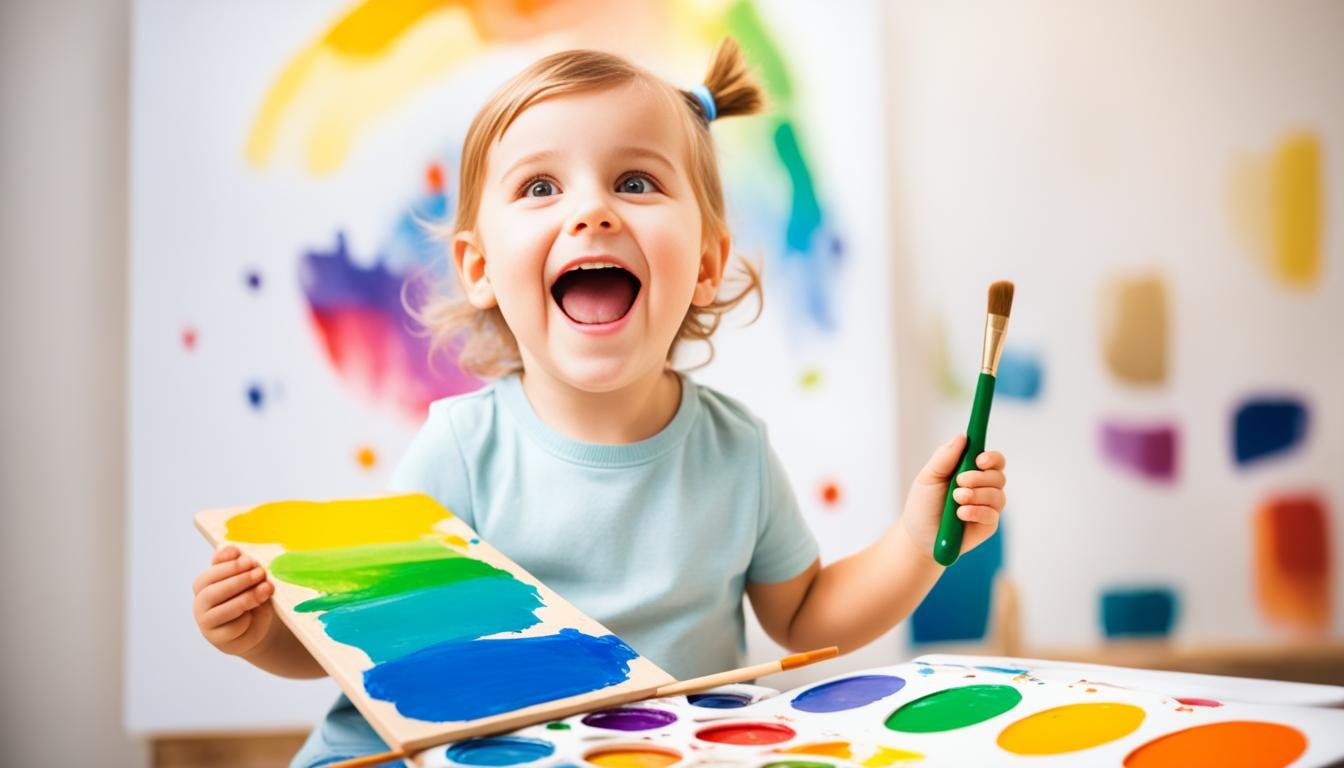What Are the Key Indicators of Healthy Emotional Development in Children, How Parents Support It?
As a parent, I often think about my children’s emotional growth. It’s become key to our daily life. I remember when my child felt frustrated over not getting a new skill right. It showed me how emotions play a big part in their learning and growing.
Understanding signs of healthy emotional growth like self-esteem and empathy changed how I help my kids. It’s not just my job to help them grow emotionally. It’s also a chance to make a safe space for them to explore their feelings. This helps support their emotional growth at every step.
Key Takeaways
- Emotional development in children is crucial for their overall growth.
- Key indicators include self-esteem, emotional regulation, empathy, and life satisfaction.
- Parents play a vital role in nurturing emotional intelligence.
- Fostering emotional maturity in kids can lead to healthier relationships.
- Supportive environments enhance children’s emotional well-being.
- Recognizing these indicators is essential for guiding parenting strategies.
Understanding Emotional Development in Children
Emotional development in children is a complex journey. It shapes their relationships and personality. It’s about recognizing, expressing, and managing feelings. Caregivers play a key role in this process.
Children start to understand and name their feelings. This helps them know themselves better. Knowing their feelings helps them handle their emotions better, making them happier.
Parents help kids learn to react in a healthy way. This helps kids have better relationships with others.
Secure bonds with parents and knowing a child’s personality help them grow emotionally. Parents adjusting to their child’s needs helps them feel safe to explore and learn. Studies show that early experiences shape emotional smarts. This includes feeling and managing emotions and understanding others.
Supporting this growth helps kids control their feelings and be kind to friends. For more info, check out this resource on emotional development in children.
Key Indicators of Healthy Emotional Development
Understanding how children grow emotionally is key to their well-being. Life satisfaction, self-esteem, and managing feelings are crucial for emotional health. These aspects help children deal with their feelings and their world.
Life Satisfaction: A Reflection of Emotional Health
Life satisfaction shows how happy and content children feel with their lives. It affects their mood and how they handle problems. Studies show that happy kids do well in social situations and bounce back from tough times.
Knowing key indicators like this helps track their emotional growth.
Self-Esteem: Building a Positive Self-Image
Self-esteem is key to how children see themselves and their abilities. Kids with high self-esteem are more likely to tackle challenges and feel good about themselves. They do well in social situations, which helps them get along with others.
Activities that boost self-confidence help kids deal with emotions and build resilience.
Emotional Regulation: Coping with Feelings
Being able to manage emotions is crucial for kids. It helps them deal with stress, anger, and sadness. This skill is the base for better relationships and solving problems.
Creating a space where kids can express feelings helps them control their emotions. This supports their emotional growth and helps them bounce back from challenges. This approach is linked to building resilience.

| Key Indicator | Description | Impact on Development |
|---|---|---|
| Life Satisfaction | Overall happiness and quality of life perception | Affects engagement and social interactions |
| Self-Esteem | Confidence in abilities and self-worth | Influences social interaction and resilience |
| Emotional Regulation | Ability to manage and cope with emotions | Shape relationships and problem-solving skills |
Stages of Emotional Development
Understanding how children grow emotionally is key for parents. Each stage has emotional milestones that show how they’re doing. I’ve seen how supporting their emotional growth helps them handle feelings better.
Infancy: Building Trust and Security
Infancy lays the groundwork for emotional health. Babies rely on caregivers for everything. Loving interactions help build trust and security. These early moments shape how they’ll connect with others later.
Toddlerhood: Exploring Emotions
Toddlers start to feel and show their emotions more. They might feel happy, upset, or sad. Letting them express feelings helps them understand their emotions better. This is key for their emotional growth.
Preschool Age: Labeling Feelings
Preschoolers get better at naming their feelings. They watch adults and talk about their feelings. Parents can teach them words for emotions, helping them recognize and say what they feel. This helps build a strong emotional base.
Elementary Years: Managing Emotions
In the elementary years, kids learn to handle their feelings well. They face more social challenges, needing to control their emotions. Parents can help by showing good ways to deal with feelings. This helps kids grow emotionally.
Signs of Healthy Emotional Growth in Young Children
Seeing my child grow emotionally is key to their well-being. I watch how they share and talk about feelings. This shows they’re learning about emotions and how to connect with others. It’s important to understand these signs to support their feelings and actions.
When kids can say how they feel, it’s a big step forward. It shows they know about their own and others’ feelings. I make sure they have a safe space to talk about their day or play games that focus on feelings.
Developing Empathy and Understanding Others
Feeling for others is a big part of being emotionally smart. When kids notice and care about how others feel, it’s a good sign. I encourage my child to talk about how others are feeling. This helps them understand and connect with others better.
Watching how they act with others shows how empathetic they are. This helps them do well in social situations.
| Sign of Emotional Growth | Description |
|---|---|
| Ability to Express Feelings | Children articulate their emotions clearly and appropriately |
| Understanding Emotions of Others | Children recognize and respond to the feelings expressed by peers |
| Engaging in Conversations | Children participate actively in discussions about emotions |
| Problem-Solving in Relationships | Children suggest solutions when conflicts arise in play |
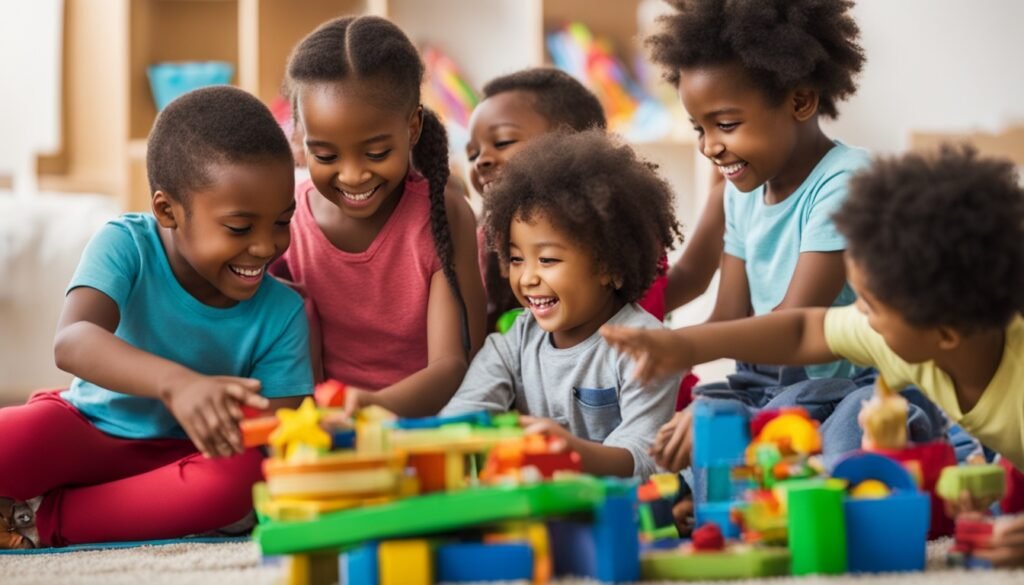
Supporting Emotional Intelligence in Children
Helping kids grow emotionally is key. Parents can do this by playing with them and showing good emotional behavior. This helps kids learn how to feel and handle their feelings.
Encouraging Expression Through Play
Play is a great way for kids to feel and share their emotions. It lets them use their feelings in a fun way. By playing together, I can help my kids talk about their feelings more.
This makes them better at understanding and using their feelings. It also helps them learn new ways to express themselves.
Modeling Positive Emotional Responses
As a parent, I need to show good ways to handle feelings. When I act well, my kids learn to feel and manage their feelings too. This helps them deal with emotions better.
It also builds a strong base for emotional smarts in their daily life. Tools like useful teaching methods help share these important lessons.
Learning about emotional smarts gets better with help from places like KidLinkLC. They offer fun learning stuff to help kids grow emotionally.
Nurturing Emotional Development Through Family Interaction
Family interaction is key to helping children grow emotionally. A positive family setting makes children feel secure. This lets them share and check out their feelings freely. Through deep talks, we help them say what they think and feel better.
Creating a Safe and Secure Environment
Children do best in places where they feel safe and loved. Making a caring home helps them feel secure, which is important for growing up. When they feel supported, they’re more open about their feelings. This helps them deal with tough emotions.
Engaging in Meaningful Conversations
Talking deeply with children is crucial for their emotional health. Chatting about their feelings lets them share and feel understood. These talks help them communicate and manage their emotions better. Sharing stories and feelings deepens emotional understanding in the family. For more info on handling family talks and keeping data safe, check this page.

| Aspect | Importance | Impact on Emotional Development |
|---|---|---|
| Safe Environment | Provides security | Encourages emotional exploration |
| Communication | Enhances ability to share feelings | Improves emotional regulation |
| Engagement | Promotes connection | Strengthens resilience |
Promoting Social-Emotional Learning in Schools
Promoting social-emotional learning (SEL) in schools is key to helping kids grow. These programs boost self-awareness, emotional control, and how they get along with others. By adding SEL to the school plan, teachers help kids learn important skills for working together, understanding others, and solving problems.
Targeted SEL strategies show how important it is for kids to know their feelings. Schools are perfect for kids to practice these skills. Activities like group projects and acting out scenarios help them talk better and manage their feelings well.
A supportive school environment is crucial for kids’ emotional growth. Teachers who focus on building relationships make a safe space. This lets students share their feelings without fear. It makes learning more meaningful and helps with emotional health.
Teaching social-emotional learning in schools sets the stage for a lifetime of emotional health. With full SEL programs, kids learn to handle their emotions better. This helps them do well in school and life. For more tips on these important skills, check out resources on supporting social-emotional learning.
Strategies for Enhancing Kids’ Emotional Resilience
In my journey to support emotional development in children, I found key strategies to boost their emotional resilience. A strong emotional base helps kids face life’s ups and downs with confidence. Here are some important ways to help build resilience in kids.
Building a Consistent Routine
Creating a daily routine is crucial for kids’ sense of security and predictability. A structured life makes them feel safe and helps them manage their feelings better. Knowing what to expect helps them deal with the unknown.
Routines can include things like mealtime, homework, and bedtime. These activities help kids feel stable in their lives.
Encouraging Problem-Solving Skills
Teaching kids how to solve problems helps them handle challenges on their own. I’ve seen that guiding them through tough times improves their critical thinking and confidence in making decisions. By letting them come up with solutions and think about the outcomes, I help them deal with hard situations better.

Using these strategies helps kids grow emotionally strong and resilient. As they learn to cope and solve problems, they get better at handling life’s ups and downs gracefully.
| Strategies | Description | Benefits |
|---|---|---|
| Consistent Routine | Establishing predictable daily schedules. | Fosters security and self-regulation. |
| Problem-Solving Skills | Encouraging independent thinking through challenges. | Builds confidence and adaptability. |
Fostering Emotional Literacy in Children
Teaching kids about emotions is key to their well-being. Using books and stories is a great way to do this. These stories help kids feel connected to different emotions in a safe space.
Utilizing Books and Stories for Learning
Stories make kids face various feelings, helping them understand their own. Reading books like “The Giving Tree” or “The Color Monster” is a good start. These stories help kids grasp complex emotions and become more aware of their feelings.
Engaging in Discussions About Emotions
Talking about emotions after reading is also important. I like to ask kids what they think characters felt or would do in certain situations. Questions like these spark conversations and help kids grow their emotional vocabulary.
| Book Title | Emotion Explored | Discussion Prompt |
|---|---|---|
| The Giving Tree | Love and Sacrifice | What does it mean to give selflessly? |
| The Color Monster | Identifying Mixed Emotions | How can we express our feelings better? |
| Where the Wild Things Are | Anger and Reconciliation | How do we handle anger in a healthy way? |
Impact of Parental Support on Emotional Well-Being
Parental support is key to strengthening emotional skills in children. Parents’ active role deeply affects a child’s sense of safety. This safety is crucial for their emotional health. When parents show love and care, they create a supportive space. This space helps build confidence and self-worth in kids.
A strong bond between parents and children helps kids feel emotionally secure. It helps them share and handle their feelings better. By understanding the importance of parental support, parents can use strategies for healthy emotional growth. This is very important during hard times, like the COVID-19 pandemic, when kids’ lives changed a lot.
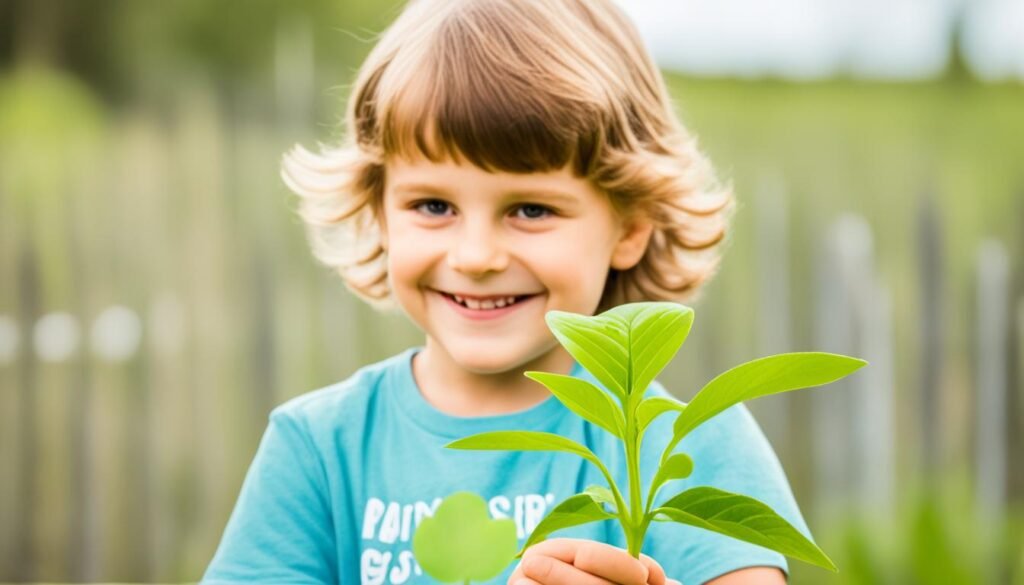
How a child feels often shows how much parents are involved. With regular support and understanding, I can help my child grow emotionally. This can lead to them becoming emotionally strong adults. Focusing on strengthening emotional skills in children means doing things that help them understand and handle emotions better.
| Parental Support Practices | Impact on Emotional Skills |
|---|---|
| Active Listening | Enhances communication and understanding |
| Positive Reinforcement | Builds self-esteem and confidence |
| Emotional Coaching | Fosters emotional awareness and regulation |
| Quality Time | Strengthens attachments and security |
By understanding and acting on the importance of parental support, I can greatly help my child’s emotional growth. A child’s emotional health often reflects how much their parents care. Being supportive now can greatly benefit them later.
For more details on this topic, check out the article on how parental involvement affects emotional health during big changes here.
Recognizing Emotional Milestones in Kids
Watching for emotional milestones in kids is key for parents wanting to know how their child is growing emotionally. By seeing how kids show and handle their feelings, I can spot when they’re doing well with their emotions. This helps me support them in growing emotionally smart.
Tracking Developmental Progress
To help my child get better at handling emotions, I keep an eye on important milestones. These include:
- Recognizing and labeling feelings.
- Demonstrating empathy towards others.
- Managing disappointments and frustrations effectively.
- Building resilience through positive interactions.
By looking at these signs, I learn a lot about how my child is doing emotionally. This helps me see when they’re ready for new things. It’s key in helping my child grow emotionally.
Identifying Areas for Improvement
I always keep an eye out for where my child might need more help emotionally. Some common areas to watch include:
- Difficulty expressing emotions verbally.
- Challenges with emotional regulation in peer interactions.
- Struggles with recognizing others’ feelings.
By noticing these signs, I can quickly fix any issues and help my child succeed. This way, my child is ready to deal with emotional challenges as they come.
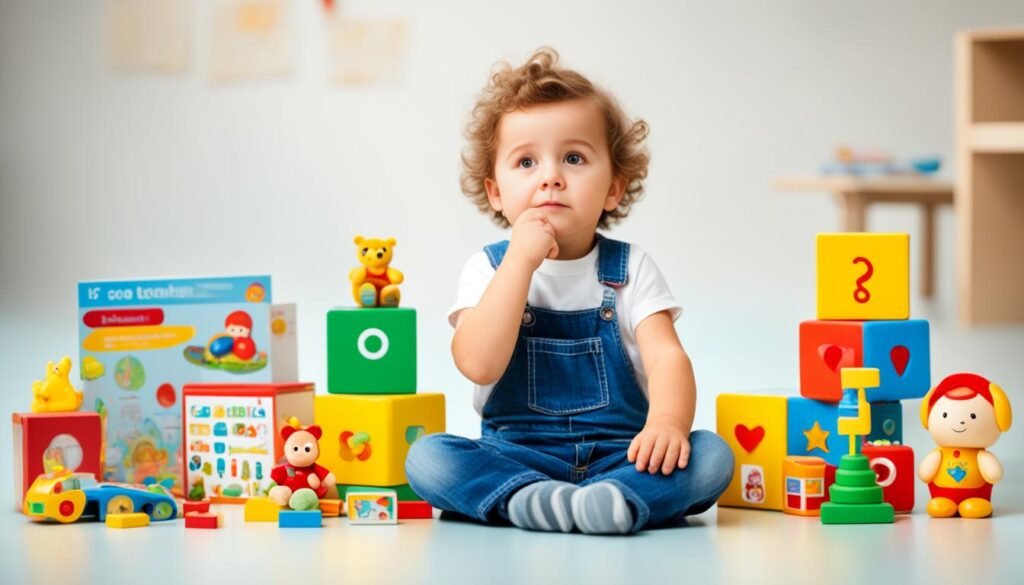
| Milestone | Age Range | Signs of Development | Areas for Improvement |
|---|---|---|---|
| Labeling Feelings | 2-3 years | Uses words for basic emotions like happy, sad. | May struggle with more complex feelings. |
| Empathy | 3-4 years | Shows concern for others’ feelings. | Struggles to understand different viewpoints. |
| Emotional Regulation | 5-6 years | Can manage emotions during play. | Occasional outbursts during frustration. |
Creating a Balanced Approach to Emotional Development
A balanced emotional development strategy combines learning about feelings with learning in school. This way, kids grow their emotional skills and their thinking skills together. By doing this, we help kids learn to handle their feelings better.
In schools, teaching kids about feelings helps teachers and parents make a caring place. This helps kids become emotionally strong, which helps them do well in school and with friends. By making emotional learning a part of daily life, we make sure they remember these lessons.
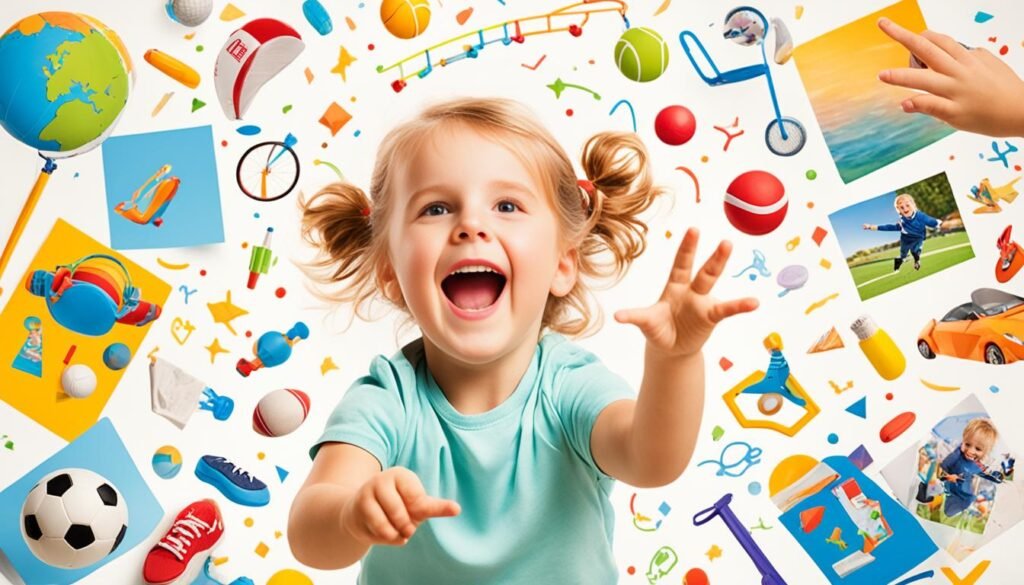
- Incorporate emotional activities in academic lessons, allowing children to connect emotionally with the subject matter.
- Encourage cooperative play that not only develops social skills but also strengthens emotional bonds among peers.
- Teach children to express their feelings openly within safe spaces, enhancing their emotional vocabulary and understanding.
- Implement mindfulness practices that help children center themselves and manage emotional responses effectively.
Knowing how to help kids grow emotionally helps teachers and parents act early. By keeping up with new research, we can always get better at helping kids feel good. Adding emotional health to learning makes kids ready for life’s ups and downs, inside and outside school.
With these efforts, I see how a balanced emotional space makes kids stronger, healthier, and more ready to tackle life’s challenges.
Building Resilience in Kids for Future Challenges
Teaching kids to be resilient is key to their growth. It’s important to prepare them for life’s ups and downs. By teaching them how to handle tough times, they learn to bounce back stronger.
Encouraging kids to be independent is a great way to build resilience. Letting them do small tasks on their own boosts their confidence. They learn that they can count on themselves and grow from their successes and mistakes.
Teaching kids how to solve problems is also crucial. Activities that make them think critically help them tackle challenges wisely. They learn to look at situations, think of solutions, and choose the best action. This prepares them for bigger challenges ahead.
It’s important to promote a growth mindset too. When kids believe they can get better with hard work and effort, they’re more resilient. They see failures as chances to learn and improve, not as the end.
- Encouraging independence: Helps children become self-reliant.
- Teaching problem-solving skills: Equips kids with the tools to face challenges.
- Promoting a growth mindset: Encourages viewing obstacles as opportunities.

Conclusion
Reflecting on how we help children grow emotionally shows us its key role in their health. It helps us see important signs of their emotional growth. This lets us support them better.
Creating a loving and safe space helps my child learn about emotions. It makes them more emotionally smart and strong.
Looking at emotional growth, it’s clear that helping kids become emotionally smart boosts their happiness now and later. Talking openly and showing good emotional behavior are key ways to help them. These actions help them deal with their feelings.
Putting emotional growth first is a big step towards their success. I will keep learning about their emotional needs. This way, they’ll become emotionally smart and well-rounded.
